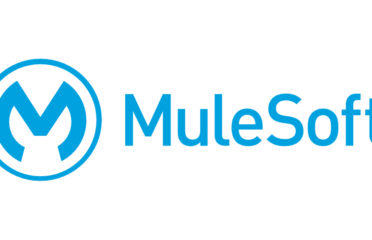The last decade has witnessed significant growth in adopting and developing Application Programming Interfaces (APIs). APIs are the fundamental building blocks that enable different software applications to communicate with each other, allowing seamless integration and data sharing. The growth of APIs has been driven by the increasing demand for interconnected digital ecosystems, the rise of cloud computing, and the need for businesses to be agile and efficient.
Growth of APIs over the Last Decade
- The rise of cloud computing: The advent of cloud computing has played a crucial role in the growth of APIs. As businesses migrated their operations to the cloud, the need for APIs to facilitate communication between cloud-based applications and legacy systems increased significantly.
- Shift towards microservices architecture: The shift from monolithic applications to microservices architecture further fueled the growth of APIs. Microservices require APIs to communicate with one another, leading to increased development and usage of APIs.
- The API economy: The API economy refers to the increasing commercialization of APIs, where businesses create, publish, and monetize APIs. The rise of the API economy has led to a surge in public and private APIs available, enabling developers to leverage existing APIs to build innovative solutions quickly.
Emerging Trends
- API standardization: As APIs grow, standardization has become increasingly important. Several initiatives, such as the OpenAPI Specification (OAS) and GraphQL, aim to provide a standardized way to describe and interact with APIs, facilitating easier integration and reducing development time.
- API security: With the growth of APIs, security concerns have also grown. API security measures such as OAuth 2.0, rate limiting, and API gateways help protect sensitive data and prevent unauthorized access to APIs.
- API-first development: Many organizations are adopting an API-first approach to software development, where APIs are designed and built before the development of the actual application. This approach promotes better collaboration between front-end and back-end developers, resulting in more efficient and robust applications.
Future Outlook
- The rise of AI-driven APIs: As artificial intelligence (AI) continues to advance, we can expect more AI-driven APIs that provide intelligent services such as natural language processing, computer vision, and machine learning. These APIs will enable developers to easily incorporate AI capabilities into their applications without the need for extensive AI expertise.
- Serverless computing: Serverless computing enables developers to build and run applications without managing the underlying infrastructure. The growth of serverless computing will likely lead to an increase in API usage as applications become more modular and rely on APIs to access various serverless functions.
- API marketplaces: As the number of APIs grows, API marketplaces will become more popular, allowing developers to discover, test, and integrate APIs easily. These marketplaces will promote increased collaboration and innovation within the API ecosystem.
API Challenges and Risks:
Despite its numerous benefits, the API landscape brings its own challenges and risks that organizations must address to ensure the success and security of their applications. Some of these challenges and risks include:
- API security: As the use of APIs grows, so does the potential for security breaches and vulnerabilities. Ensuring the security of APIs is paramount to protecting sensitive data and maintaining the integrity of the applications. Common risks include unauthorized access, injection attacks, and data leaks.
- Scalability: As applications grow and their user base increases, the demand for API calls and the associated data exchange can increase significantly. Ensuring that APIs can scale to handle increased traffic without performance degradation is a crucial challenge.
- Monitoring and management: With the increasing number of APIs, monitoring their performance, availability, and usage becomes essential. Organizations must implement robust API management tools and practices to effectively monitor and manage their APIs and identify potential issues before they escalate.
- Integration complexity: Integrating APIs from different vendors and platforms can be complex and time-consuming, often requiring additional development effort to ensure seamless connectivity between systems. Ensuring compatibility and managing dependencies between APIs can be challenging.
- Standardization and interoperability: The lack of standardization in the API landscape can result in difficulties when integrating different APIs. Adopting industry standards such as OpenAPI Specification (OAS) and GraphQL can help improve interoperability and reduce integration challenges.
- Versioning and backward compatibility: Maintaining backward compatibility becomes a challenge as APIs evolve. Developers must ensure that new versions of APIs do not break existing integrations while accommodating new features and improvements.
- Regulatory compliance: Many industries have strict regulations regarding data privacy and security. Organizations must ensure their APIs comply with these regulations to avoid legal and financial repercussions.
- Developer experience: A poorly designed API with inadequate documentation can hinder developer productivity and increase development time and costs. Ensuring a good developer experience with clear documentation and easy-to-use interfaces is essential for API adoption and success.
- API monetization: For organizations that aim to monetize their APIs, defining the suitable pricing model, billing system, and revenue-sharing agreements can be challenging.
- API discovery: With the growing number of APIs available, discovering the correct API for a specific use case can be daunting. API marketplaces can help address this challenge by providing a platform for easy API discovery and integration.
Chief Information Security Officers (CISOs) are critical in addressing the risks and vulnerabilities associated with APIs. To ensure robust API security, CISOs can take the following steps:
- Develop an API security strategy: CISOs must develop a comprehensive API security strategy that considers the organization’s unique requirements, risk tolerance, and compliance needs. This strategy should include the identification of potential risks, assessment of their impact, and the establishment of appropriate controls.
- Establish API security policies and guidelines: Define clear policies and guidelines for API development, deployment, and management. These policies should include authentication, authorization, data protection, and secure coding practices.
- Implement API access control: Employ strong authentication and authorization mechanisms, such as OAuth 2.0, to control access to APIs. Ensure that only authorized applications and users can access the APIs and that access is limited based on the principle of least privilege.
- Secure API communication: Ensure API communication is secured using encryption protocols such as TLS (Transport Layer Security) to protect sensitive data during transmission.
- Regularly assess API vulnerabilities: Conduct security assessments, including vulnerability scanning and penetration testing, to identify potential weaknesses in APIs and address them before they can be exploited.
- Monitor and log API activity: Implement monitoring and logging of API activity to detect and respond to potential security threats in real time. This will also help with auditing and compliance requirements.
- Leverage API gateways and security tools: Use API gateways and specialized security tools to enforce security policies, manage access control, and protect against threats such as DDoS attacks and API abuse.
- Secure API development: Adopt secure development practices, including using safe coding guidelines, code reviews, and automated security testing tools to ensure that APIs are developed with security in mind.
- Training and awareness: Provide regular training and raise awareness among developers, IT staff, and other stakeholders about API security best practices and the importance of adhering to established policies and guidelines.
- Collaborate with other departments: Work closely with other departments, such as development, operations, and compliance teams, to ensure a holistic approach to API security across the organization.
API security vendors offer various solutions to help organizations safeguard their APIs from potential threats and vulnerabilities. These solutions typically include capabilities such as API gateways, API management platforms, and specialized security tools.













